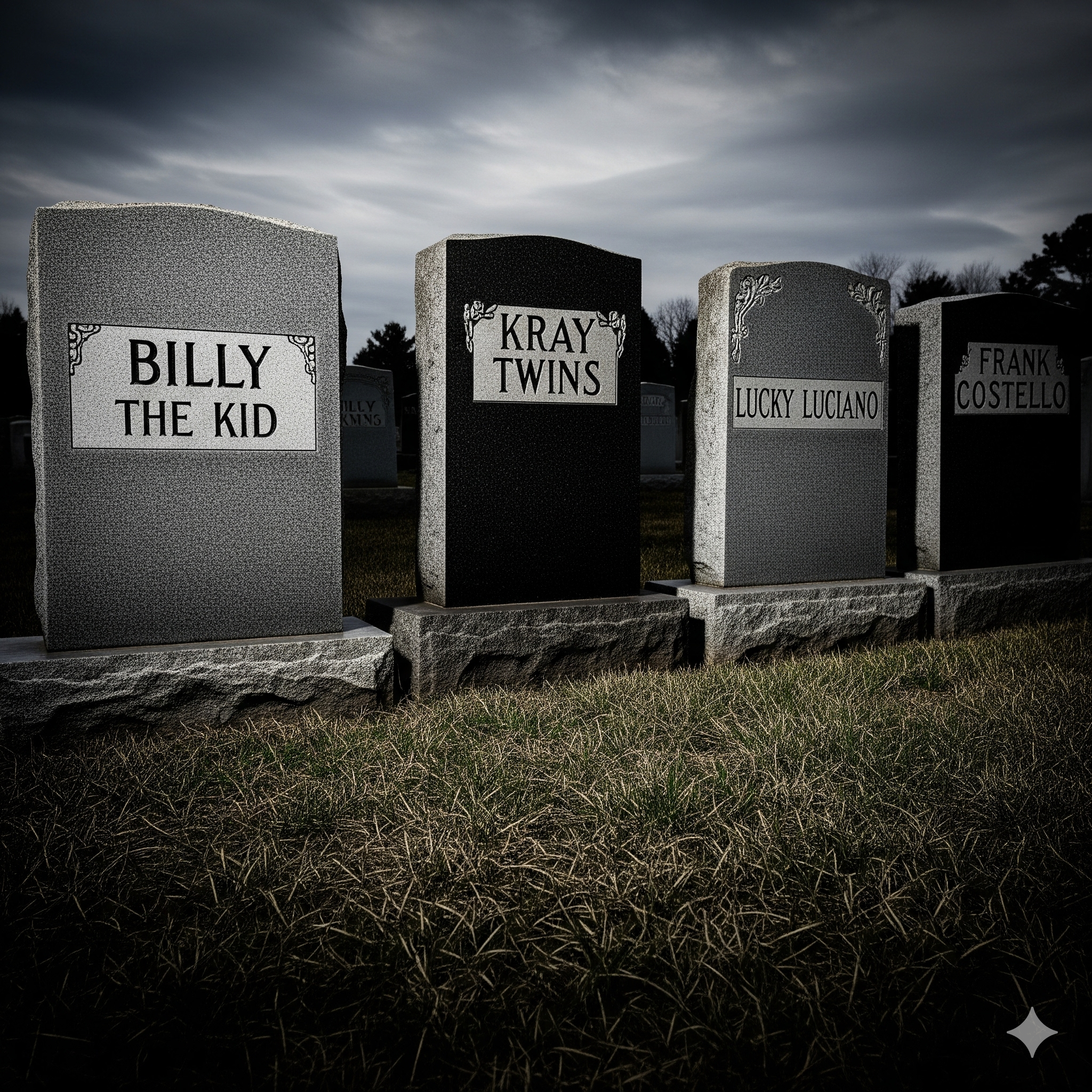The finality of a grave is a universal concept, yet for a select group of individuals, their death is not a quiet conclusion but a continuation of the morbid fascination they commanded in life. The burial sites of famous criminals, from the gunslingers of the Old West to the mob bosses of the Prohibition era and the modern-day gangsters of London, serve as tangible touchstones to a dark and captivating history. These aren’t just simple headstones; they are monuments to notoriety, often reflecting the lives of the buried in their grandeur, desolation, or the very security measures required to protect them from both reverence and desecration.
The graves of these infamous figures offer a unique lens through which to examine society’s complex relationship with crime, morality, and celebrity. The public’s enduring interest in these burial sites is a testament to the power of a compelling narrative, even one steeped in violence and transgression. Visitors flock to these locations not to mourn, but to bear witness to the end of a legend, a final chapter in a story that has been told and retold for generations. The very act of visiting a criminal’s grave is a form of pilgrimage, a macabre tourism that blurs the lines between history, curiosity, and a strange sort of admiration. It is a space where the myth and the man—or woman—converge, where the sensationalized deeds of a lifetime are reduced to a name, a date, and a patch of earth.
One of the most striking examples of this phenomenon is the grave of Henry McCarty, better known as Billy the Kid. The American frontier outlaw, who was shot and killed by Sheriff Pat Garrett in 1881, is buried in the Old Fort Sumner Cemetery in New Mexico. The grave is not a majestic mausoleum or a grand monument, but a simple tombstone with the single word “Pals” carved into it, marking the resting place he shares with his companions Tom O’Folliard and Charlie Bowdre. However, the simplicity of the headstone belies the intense public interest in the site. The tombstone has been stolen and recovered at least three times, a testament to the fervent desire for a piece of the legend. To protect it, the entire grave is now enclosed within a formidable steel cage, a final, ironical prison for a man who spent his short life on the run. The cage speaks volumes about the enduring allure of Billy the Kid—a folk hero to some, a cold-blooded killer to others—and the lengths to which his legacy has been guarded.
The graves of mobsters from the era of organized crime, particularly those in New York, present a stark contrast to the rustic, almost accidental memorial for Billy the Kid. The burial sites of figures like Lucky Luciano and Frank Costello are grand, imposing mausoleums that project a sense of power and wealth, even in death. Luciano’s final resting place is a stately white stone building with Grecian columns in St. John Cemetery in Queens, New York. His body was transported back to the United States after his death in Italy, a testament to his continued influence and the respect he commanded. This ornate structure, with the family name “Lucania” prominently displayed, is a permanent assertion of his status as a titan of the underworld. It is a symbol of a man who, despite his criminal life, sought to project an image of legitimacy and success, a narrative that his funeral and burial were designed to reinforce.
Similarly, Frank Costello, a mob boss who preferred to operate in the shadows and cultivate an image of a refined businessman, is buried in an elegant mausoleum at St. Michael’s Cemetery in Queens. The structure, a gracious, columned affair, perfectly aligns with the sophisticated persona he cultivated during his life. His wife, who abhorred his criminal associates, even requested that none of them attend his funeral. This mausoleum, in a non-sectarian cemetery, stands as a final, quiet victory for a man who sought acceptance and respectability, a permanent barrier between his life of crime and the final resting place he chose for himself. The fact that his mausoleum was once targeted by a rival gang with a homemade bomb, which blew off its bronze door but left his remains unscathed, only adds to the layers of myth and violence that surround his legacy.
The graves of the Kray twins, Ronald and Reginald, also reflect the complex and almost paradoxical relationship between a criminal’s life and their posthumous veneration. The notorious English gangsters, who held a grip on London’s East End during the 1960s, are buried alongside their family members in Chingford Mount Cemetery. Their burial plot is not a place of quiet reflection but a site of pilgrimage for those who still hold them in a mixture of fear, respect, and admiration. The cemetery is often frequented by visitors who leave flowers and tributes, a clear indication that their reign of terror and celebrity status have endured beyond their deaths. The graves of the Krays are a stark reminder of the cultural impact of their crimes and the enduring fascination with the “old school” British gangster archetype.
The burial of Frank James, the older brother of the more famous Jesse James, offers yet another perspective. Frank, who lived a significantly longer and more peaceful life after surrendering to authorities, is buried in the Hill Park Cemetery in Independence, Missouri. His grave is more subdued than his brother’s, which was famously chipped away at by souvenir hunters. Frank’s tombstone is a quiet, dignified marker that reflects his later life, a stark contrast to the flamboyant, wild reputation of his youth. His burial site stands as a subtle reminder of the different paths a life of crime can take, and the possibility of a final, quiet peace, even for an outlaw.
Finally, the grave of George “Machine Gun Kelly” Barnes in Cottondale Cemetery, Texas, is a more somber affair, reflecting a life that ended in prison. Kelly, an American gangster known for his Prohibition-era crimes, died of a heart attack in Leavenworth Penitentiary. His grave is a humble marker, lacking the opulence of the mob bosses or the legendary status of the Old West outlaws. It serves as a quiet postscript to a life that began with grand aspirations of criminal notoriety but ended in confinement and obscurity.
In conclusion, the final resting places of famous criminals are more than just graves; they are cultural artifacts, each telling a story that extends far beyond the final breath of the person buried beneath. They reveal the enduring public fascination with lawlessness, the complex ways in which we memorialize those who defy societal norms, and the powerful, lasting impression left by a life lived on the fringes. From the caged tomb of Billy the Kid to the grand mausoleums of mob bosses and the solemn markers of lesser-known figures, these burial sites serve as silent, yet powerful, testimonies to the indelible mark these figures have left on history and our collective imagination. They are a poignant and sometimes unsettling reminder that even in death, a life of infamy can continue to command a stage.

